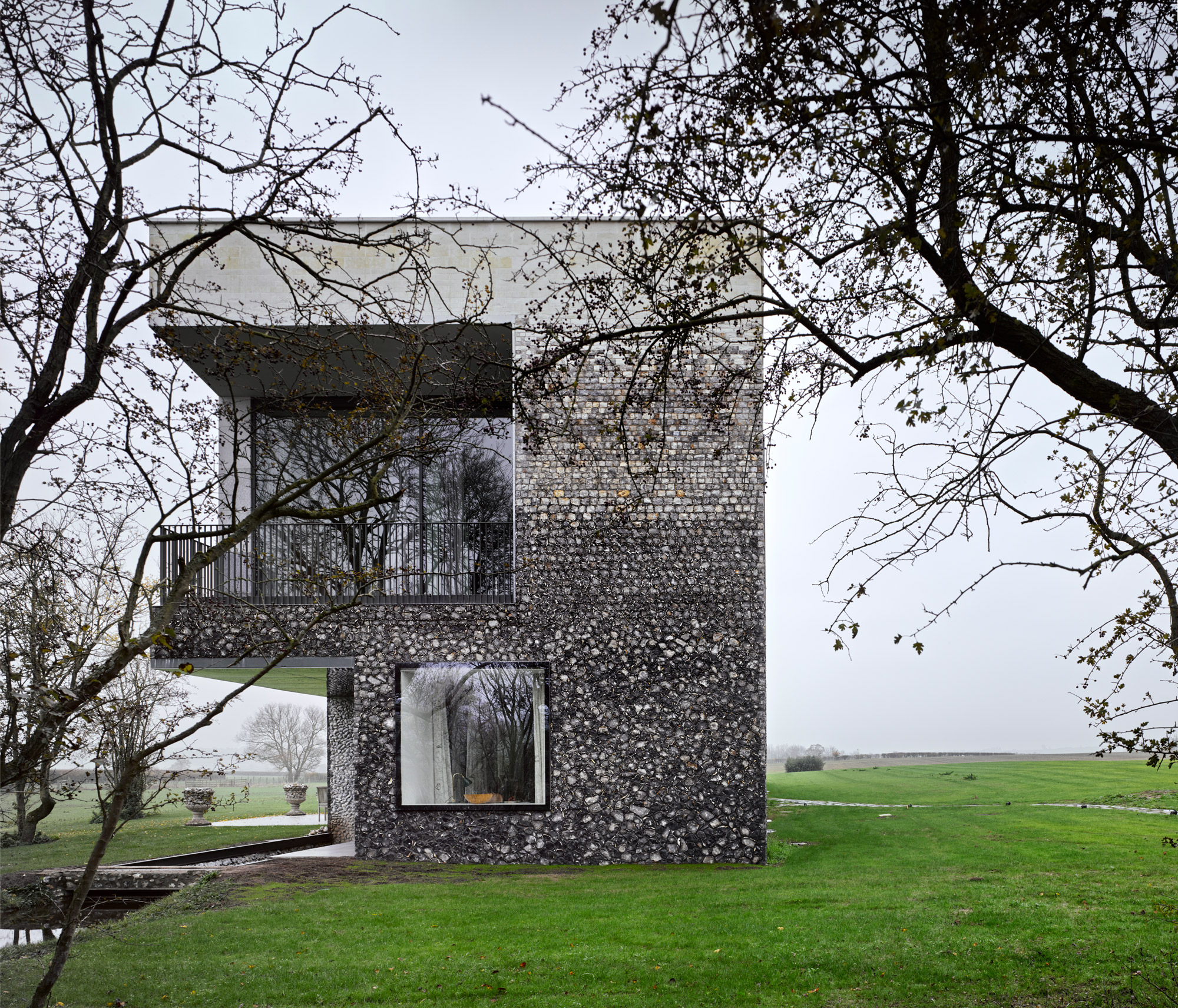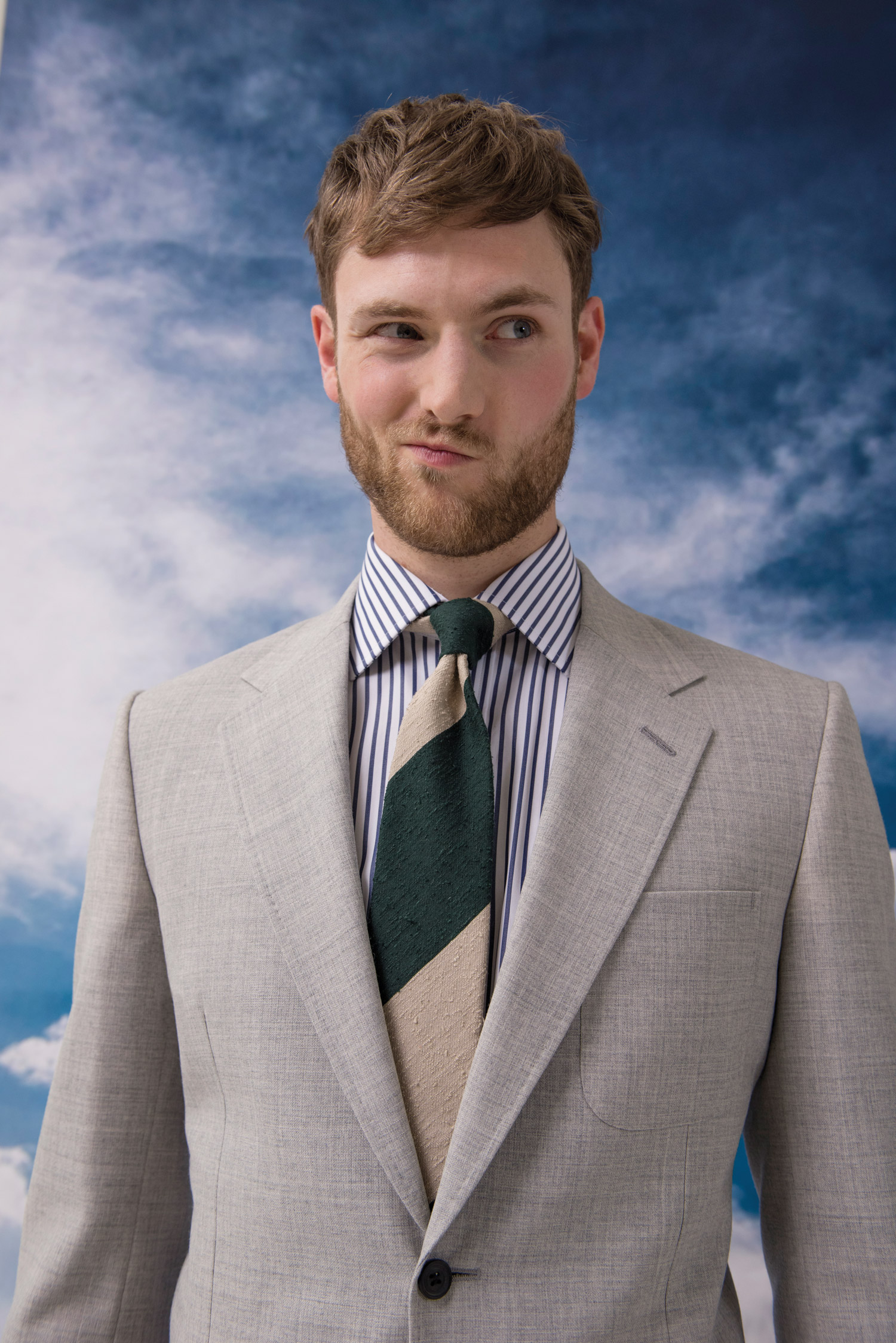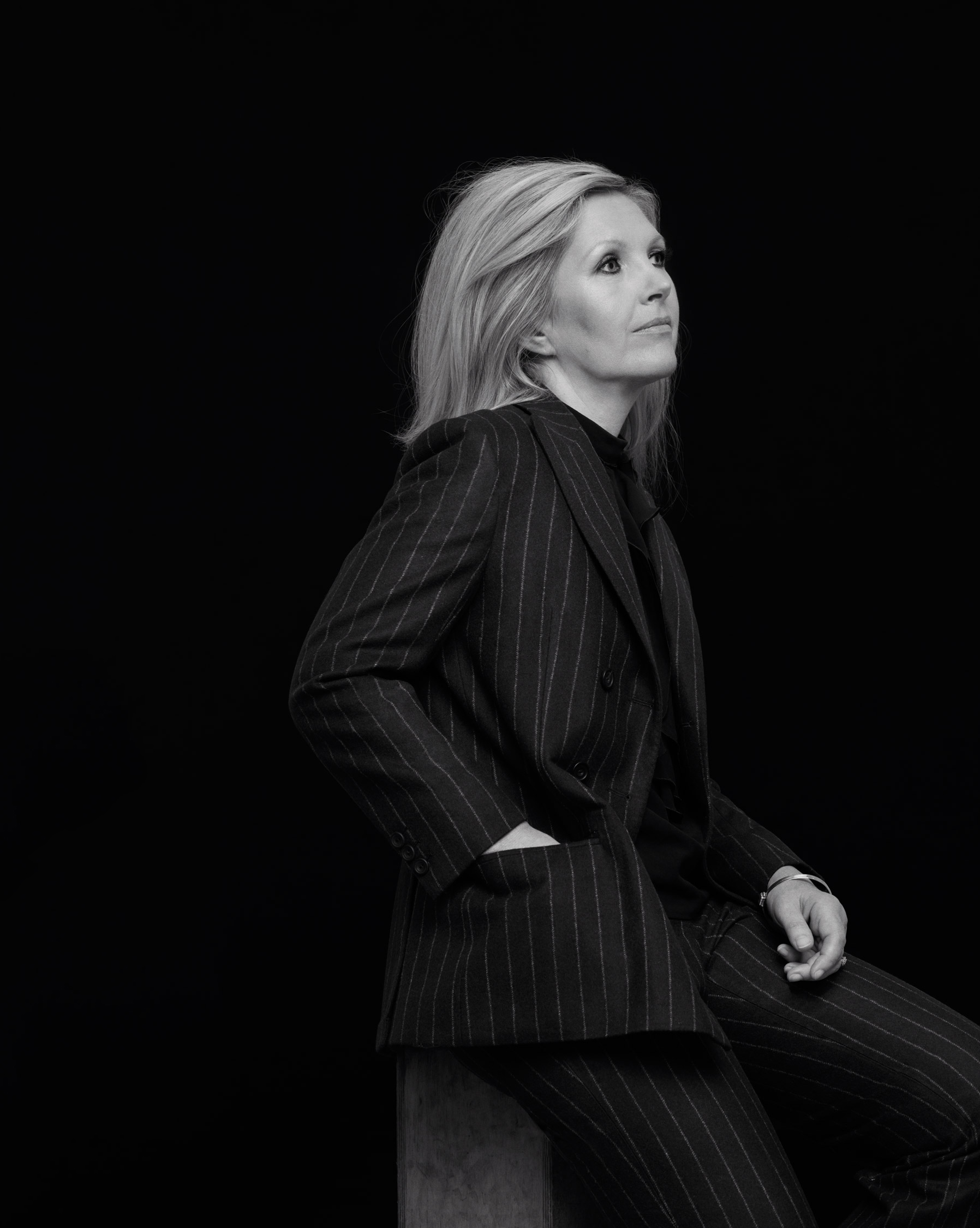They say good things come to those who wait, and Michael Anastassiades has waited a long time for the success he is currently enjoying. For the first time in a career that spans more than two decades, the 48-year-old London-based Cypriot designer has a surplus of exciting projects to manage, from developing new products with established brands to expanding his own collection and curating exhibitions. It’s a privileged position, which he attributes to patience and maintaining his belief in the importance of quality over short-term financial gain. “I want to keep my ideas as pure as possible,” he claims, “and I don’t want to compromise because I believe in these products.”
Anastassiades founded his studio in 1994 and is best known for creating sculptural lighting, mirrors and tabletop objects that combine pure geometric forms with honest materials, such as patinated brass and mouth-blown opal glass. These objects can be found in some of the world’s most prestigious hotels, restaurants and boutiques, while collaborations with leading architects and interior designers, including David Chipperfield, John Pawson and Ilse Crawford, have helped establish his work as a staple of high-end interiors.
The coming months will see Anastassiades curate a display at the Paris gallery of a prominent Danish antique dealer, and launch a furniture collection with American firm Herman Miller during Milan’s annual design week. He will also oversee the presentation at the company’s city centre store, which will incorporate new additions to his own series of lighting designs. The recent surge of interest in his work presents unfamiliar challenges but Anastassiades is enjoying the variety of work and the control he now has over his studio’s output. “I feel in a good place because I’m able to stand by the values I believe in,” he explains, “so if I’m uncomfortable or feel cornered I have a choice to say ‘I don’t believe in this, I’m out’, and that’s a privileged position to be in.”
The story of how Anastassiades reached this point is typical of many independent creatives who choose to dedicate their careers to the pursuit of deeply held personal values. The designer went to school in Cyprus and completed his military service there before moving to London in 1988 to continue his education. He was encouraged by his family to study a ‘proper trade’ and gained a Civil Engineering degree from Imperial College London before being enticed by the creative energy he encountered at the Royal College of Art, where he completed a masters in Industrial Design.
After graduating, Anastassiades struck out on his own, developing a range of experimental pieces that explored ideas relating to how people perceive everyday objects and technology. The designs were well received and exhibited at some of the world’s leading galleries and museums, but were never successful on a commercial level. Attempts to seek manufacturers for his early products and lighting designs led to frustration as the relationships faltered over financial complications or a lack of confidence in dedicating resources to new design directions. “I found it very draining and also very destructive to the creative process,” the designer says of this initial experience working with big brands. “I decided I didn’t want to corrupt myself with this [way of working] and instead I established a platform that would allow me the freedom to create without having to depend on anybody else.”


In 2007, Anastassiades founded an eponymous label to manufacture and retail his own designs. Over several years he developed a portfolio of products distinguished by their individualistic and timeless qualities, including the Onyx light (2007), Mobile Chandeliers (2008) and Beauty Mirror (2010). A key moment in the designer’s crossover into the mainstream occurred in 2013, when Italian lighting brand Flos invited him to create a collection in his own distinctive style. The resulting IC Lights featured opal-glass spheres balanced on brass rods and were a huge hit, helping to demonstrate the mass appeal of Anastassiades’ work. “Many people were aware of what I was doing with my own brand but suddenly they saw the success of something on a more commercial scale,” he recalls. “The visibility of the product changed their perception of what it is that I do and they began knocking on my door for a change.”
“I decided I didn’t want to corrupt myself with this [way of working] and instead I established a platform that would allow me the freedom to create without having to depend on anybody else”
Anastassiades now looks for opportunities to collaborate with brands that will allow him to explore his own ideas, and he is quick to point out that designing for mass production needn’t mean a dilution of his long-held values. “It’s a challenge to work on projects with such different scales,” he adds. “It’s not about the money, it’s about creating successful products, and working with big companies makes it possible to reach a different audience and a bigger scale, which is great.” His collaborations with companies including Lobmeyr, Coedition and Verreum have yielded products that apply his signature aesthetic to a range of materials and product typologies.
Since 1998, Studio Michael Anastassiades has operated out of its founder’s home near Waterloo station. Anastassiades converted the building into a chic, minimal residence and showroom that has regularly acted as a platform for experimenting with and displaying new products. Next year, he and his team of six will relocate to a larger space in Camden. Although Anastassiades is pleased that the increased workload has caused the studio to outgrow its current location, he is keen to ensure it doesn’t get much bigger. “For me, the idea of personal involvement is very important,” he insists. “I’d like to remain small, even though I’m going to do more stuff in the future — I don’t want to create a monster.”
Looking ahead, Anastassiades is confident he can continue to do interesting work whilst keeping the studio at a manageable size. Having patiently built his brand and developed strong relationships with like-minded collaborators, he has achieved the level of creative autonomy he always sought and is currently content to continue dedicating time to what he does best. “I’m not a designer who is interested in putting my signature everywhere,” he points out. “I really believe in doing quality work and focusing on things where I feel I can contribute something.” This means we can look forward to more furniture, lighting and products in his studio’s singular style, as well as further collaborations with a diverse range of clients, who are now lining up to knock on his door. For Anastassiades, patience has certainly paid off.



